It has been said that the only constant in life is change, and the AFL is no exception to that rule. No teams will be at the top forever, and the best teams are constantly in flux as squads move in and out of contention.
An examination of recent AFL history shows how constant this change is. Since the introduction of the top eight in 1994, at least two teams each year have failed to make the finals after making it the year before. The average number of new finals teams each year is about three, but in 2001, 2002 and 2007, there were four new finalists from the year before.
Throughout history, it has been very rare for there to be an exact repeat of finals teams. On only two occasions since the Second World War (in 1973 and 1966) have all the teams returned to the finals from the previous season, and those occurrences were when there were only four finalists.
Barring a historic set of circumstances, it is likely that around two or three of the 2020 finalists will not make the top eight in 2021. In this article, I’ve ranked the likelihood of each 2020 finalist returning to the big dance, from most likely to least likely.
1. Brisbane Lions
To put it simply, they are very young, very good and still have room for improvement. The Lions are in a position to be strong finals contenders for years to come. They already possess the fourth-youngest list and have the equal-most number of under-21s. A look at their key performance measures suggests they are tracking well. They are already elite at moving the ball from clearances and into their forward 50 and, despite some forward line struggles, they are still the third highest-scoring team.
They have two main areas of improvement – they struggle with turnovers and effective disposal, and they are relatively poor at converting forward 50 entries. While these are important measures, they are both ones that are fixable with the ongoing development of the list.
To further help resolve these issues, Brisbane have intelligently managed their salary cap and seem likely to make a play at key forwards like Jeremy Cameron and Joe Daniher, as well as adding depth with Nakia Cockatoo.
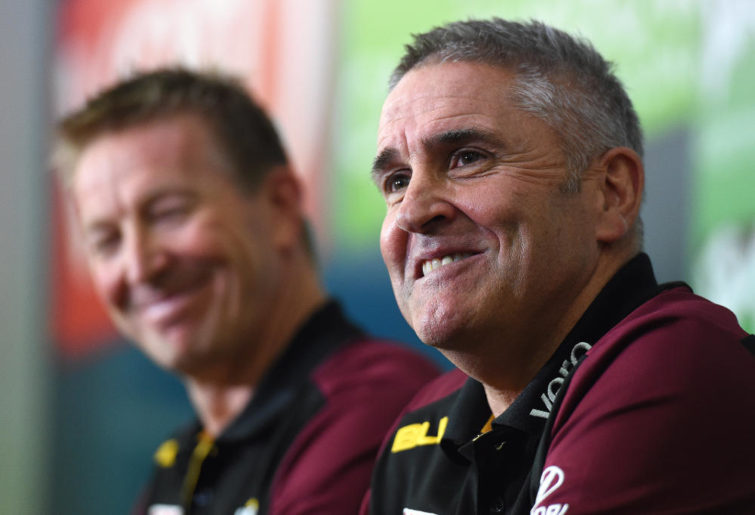
Chris Fagan and the Lions look good for a while. (AAP Image/Dave Hunt)
2. Richmond
More than any other 2020 finalist, Richmond play a style of football that is less reliant on their top-end players performing well. The Tigers use a high-pressure style, which forces mistakes from their opponents and allows Richmond to transition the ball quickly and directly.
This style of play places less emphasis on the ball skills of players, but more upon their physical capabilities and mindset, both traits which are easier to replace. In the last two years, Richmond have been more able than other top teams to survive injuries and absences to their key players partly due to their club-wide adherence to an effective game plan.
Even though the Tigers have some important older players like Bachar Houli, Jack Riewoldt and Trent Cotchin, there are natural replacements already on their list. Tom Lynch has already taken the number one forward role from Riewoldt, and the improvement of Jack Graham and Shai Bolton leaves Richmond’s midfield as strong as ever.
Right now, Richmond only have the ninth-oldest list in the competition and many of their key players are in that mid-to-high 20s age range. This suggests that they will be strong premiership chances for at least the next two years.
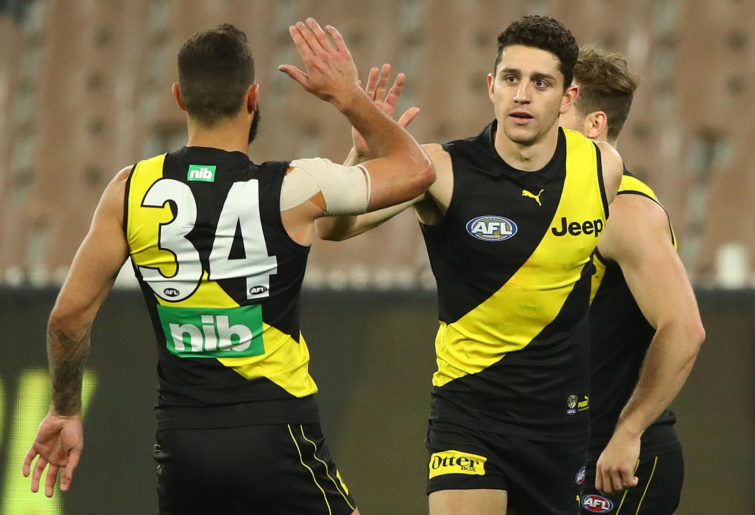
The Tiger train isn’t stopping anytime soon. (Photo by Robert Cianflone/Getty Images)
3. Western Bulldogs
The modern game is a midfielders’ game and the Bulldogs are blessed with high-quality mids who are at their peak. In Marcus Bontempelli, Jackson Macrae, Bailey Smith and Lachie Hunter, the Bulldogs have the top-end quality to keep themselves competitive for the next few years. If players like Josh Dunkley, Pat Lipinski and Ed Richards develop further then the Dogs will have one of the best midfields around.
They also are a team in that ideal age-range, where most of their key contributors are in their 20s. Their most important older player is Easton Wood, but he probably isn’t among their best anymore.
They are also well-coached and play a style of football that bodes well for the future. They are top five in the league in effective disposals, score involvements and marks inside 50. This indicates a team who is very adept at transitioning from the contest and moving the ball to create opportunities.
Their biggest cause for concern is that they lack a genuine top-end key forward to maximise the opportunities created by their midfield. Mitch Wallis has done well this year, but is not a long term solution. Aaron Naughton does have great potential and holds the key to the Bulldogs chances over the next two years. If he blossoms into a top-tier target than the Bulldogs are a potential top four team in 2021. If he struggles, then they may not have enough scoring power and could even miss the eight.
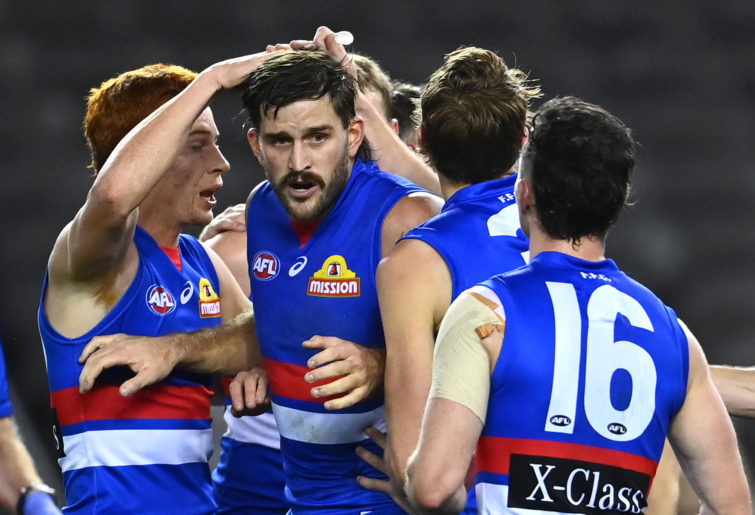
The Bulldogs look the goods too. (Photo by Quinn Rooney/Getty Images)
4. West Coast Eagles
The Eagles have the age profile of a team that is due for decline. They have both the second-oldest list in the competition and the second-oldest best 22, behind Hawthorn in both cases. However, there are a number of factors which suggest that they are at least two years away from feeling the impact of an ageing list.
The Eagles play a brand of football which is protective of some of the limitations of an older team. During their recent competitive years, West Coast have prioritised ball retention by foot and placed relatively little reliance upon contested situations. While this gameplan is risky, it lessens the physical impact on individual players which is beneficial for an older list.
Despite their older average age, West Coast don’t have too many important players in the over-30 range. Josh Kennedy and Shannon Hurn are 33 and may retire, but the Eagles have natural replacements for both in Oscar Allen and Liam Duggan. The biggest risk is Nic Naitanui as he is a player who is still highly reliant on his physical gifts. While he has looked fantastic in 2020, it is a risk.
Ultimately, the Eagles have the elite talent to be a finalist in 2021, but the clock is ticking. The Eagles older average age is bolstered by having a high number of important players in the 28 to 29 age range – like Brad Sheppard, Jeremy McGovern, Jack Darling, Andrew Gaff. Over the next two years, these players will start to decline and further expose West Coast’s younger players. As such, Eagles fans may need to brace themselves for some harder years in 2022 or 2023.
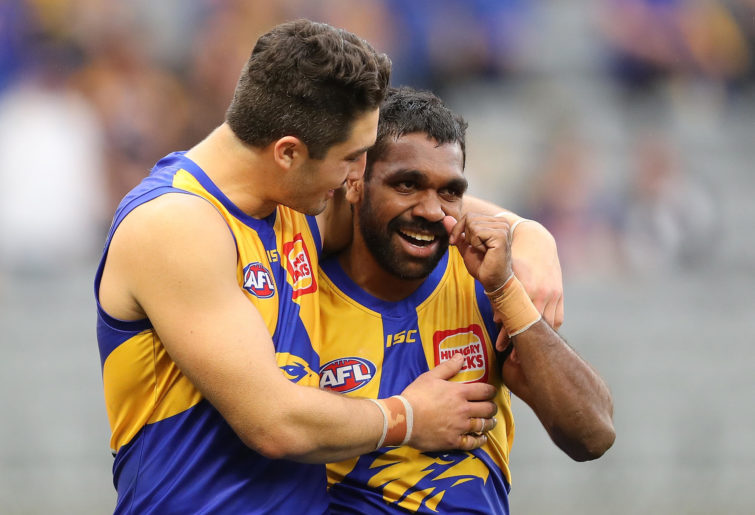
The Eagles should be okay, for now. (Photo by Paul Kane/Getty Images)
5. Port Adelaide
Port were the toughest team to rank for the purpose of this exercise. There are underlying markers which suggest they will be competitive in the years to come. They are young and their performances this year were excellent. They ranked top-five in a range of key indicators. The only major one they perform poorly in is their rebound from defence, but that’s mitigated by their elite contested play.
Generally, young-ish teams who finish top of the ladder don’t tend to miss the finals the following year, and Port probably won’t. However, there are some factors that give me cause for concern. Firstly, five out of their (arguably) ten most important players are over 30 – Travis Boak, Robbie Gray, Charlie Dixon, Hamish Hartlett and Tom Rockliff. If they decline, I don’t think there is enough natural talent on their list to cover those players.
Secondly, Port Adelaide have real questions at either end of the ground. In their forward line, Port are too reliant upon Charlie Dixon and need someone like Todd Marshall or Mitch Georgiades to really establish themselves as a viable second banana. Down back, Port should be commended for crafting a strong defence relying upon undersized key defenders like Tom Jonas and Trent McKenzie.
However, I think part of the reason their defence performed so well was due to the contested efforts of their midfield. If there is any slippage in their midfield performance, their backline could be exposed.
Lastly, they had a lot of luck this year. Port suffered relatively few injuries and did not need to test their depth. Injuries are tremendously variable from year to year and Port will likely suffer some more losses in 2021.
If not for the next team on this list, Port Adelaide would be the 2020 finalist with the greatest potential for future uncertainty. They have the quality to finish top in 2021, but if injuries hit or their older players decline, then they could easily tumble down the ladder.

(Photo by James Elsby/AFL Photos via Getty Images)
6. Geelong
The Cats are the biggest wildcard in this list. There are some indicators which suggest they are well-positioned for the future, but there are others which suggest some future struggles.
A close look at their list shows that a lot of their important players are in the older age-range. Gary Ablett and Harry Taylor are likely to retire at the end of the year, while vital contributors like Tom Hawkins, Joel Selwood, Zach Tuohy and Patrick Dangerfield are older than 30.
Despite having the equal-most over 30s (with Hawthorn), Geelong also have the equal-most (with Brisbane) under 21s. The problem with having a list with such a high proportion of older and younger players is that Geelong are poorly stocked for important players in their mid-20s who could maintain their current level of performance.
The uncertainty for Geelong is how their young players will develop. Of their players who are 22 or younger, only Brandan Parfitt, Jack Henry and Gryan Miers have really proven themselves as genuine high-quality AFL footballers, although they have also seen some encouraging signs from youngsters like Esava Ratugolea, Quinton Narkle and Jordan Clark.
This uncertainty means that Geelong have the greatest variance in what happens next. If their older players maintain a high level of performance and their swathe of youngsters develop, they’re on track for another top-four finish.
However, if the older players decline and the younger players are not ready to step-up, then the Cats’ lack of strong mid-range players has an impact and they could easily miss the finals.
The Cats are well-led and play a good brand of football. As such, it’s more likely that the first scenario occurs. Yet, Geelong could repeat the recent history of their great rivals Hawthorn and be heading towards some lean years.
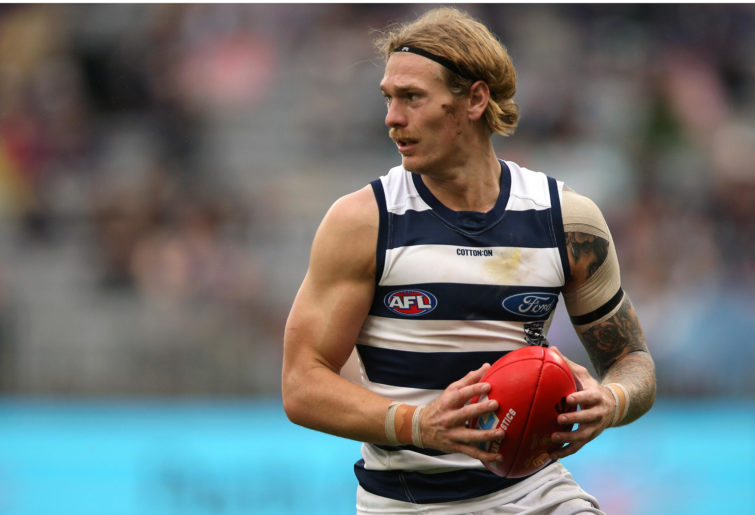
(Photo by Paul Kane/Getty Images)
7. St Kilda
St Kilda will be the ‘prove it’ team for next year. They played well in 2020 behind a coaching change that helped enervate their squad and had the Saints playing a different brand of football.
However, when a side has gone through a big improvement, the challenge is always being able to retain their position. There will be no sides that will underestimate the Saints in 2021 and other teams will have had another off-season to review and consider St Kilda’s approach and attack it accordingly.
Every year there is a team that overachieves against expectations and makes the final eight. To give a recent example, in 2018, a young Melbourne team flew into the finals with a second-year coach and made it into the preliminary finals before falling back to earth in 2019. In 2017, Port Adelaide made the finals against the odds before again finishing tenth the next year. In each of these cases, they struggled to maintain the same hunger and gameplan and fell back to the pack.
What protects a team against falls down the ladder is having a strong core of star players who can help a team win matches when they aren’t playing at their best. If you look at the rest of the 2020 finalists, they all have a clear set of elite players at the top. I doubt whether St Kilda have that real top-end quality.
The Saints traded for Dan Hannebery and Brad Hill to provide that quality but through a combination of injury and poor form, they have not lived up to expectations. There has been clear improvement from Jack Steele and Zak Jones and they could possibly be the stars that the Saints need. If they can raise their game, St Kilda could stay in the bottom half of the eight. If that cannot occur, they will struggle to play finals next year.
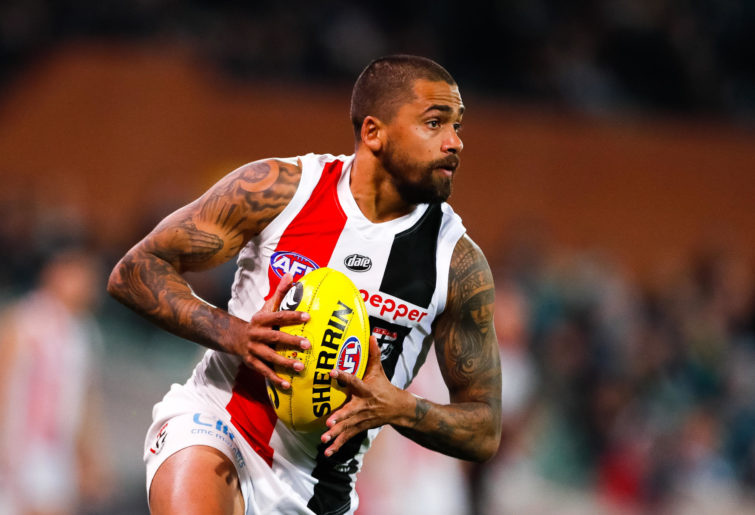
(Photo by Daniel Kalisz/Getty Images)
8. Collingwood
For most of the teams on this list, I’ve focused upon their players and what it says about that team’s ability to repeat their performances next year. For Collingwood, I think the question is also about their strategy and approach.
Collingwood have a gameplan that has been shown to be ineffective against the best teams in the competition. They want to move the ball by hand, but struggle under pressure. If they move the ball by foot, they struggle to hit targets effectively.
In addition to making a lot of mistakes, they are slow and indecisive with the ball. They don’t have a true line-breaking midfielder or backman who can help a team shift the ball into their forward line to the advantage of their forwards. Their best option is Brayden Maynard, or perhaps John Noble, but neither have truly shown that ability for an extended period.
While their ball movement does not help their forward line, there is also just a lack of real dangerous forwards who can put their opposition under pressure. Jordan de Goey is the only forward who can make an opposition team nervous. All this adds up to create a Collingwood team who were the lowest scoring finalists – 13th in the AFL.
The reason I don’t think Collingwood will make the eight next year is it is unclear where improvement comes from for this team. They are already the oldest list in the AFL, and have the fourth-most experienced ‘best 22’. As such, there is less scope for internal improvement. Plus, the recent cases of Jaidyn Stephenson and Tom Phillips raise questions about how effective the Pies development programs are.
Collingwood are also not going to be able to access many new players. If they re-sign De Goey and Darcy Moore, they won’t have much salary cap room. They will go for a key forward like Ben Brown or Peter Wright, but those players will have a minimal impact on this current team.
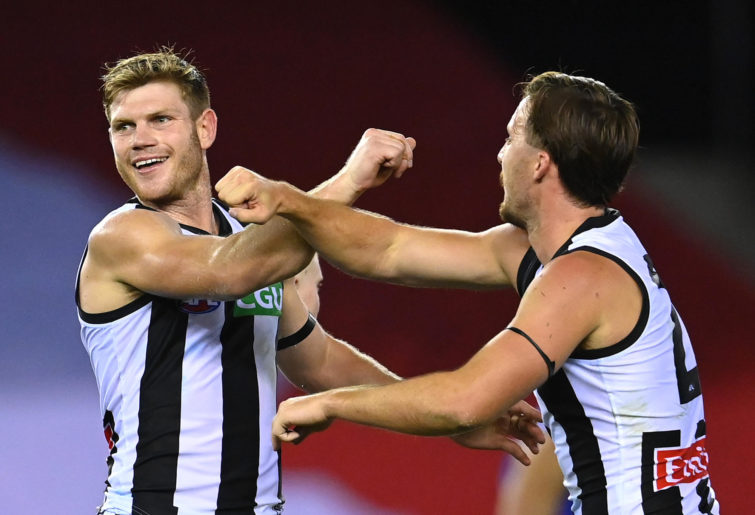
(Photo by Quinn Rooney/Getty Images)
It is a long way until 2021 and a lot can obviously change between now and the first week of finals next year. One thing that is certain though, is that some of this year’s finalists will not be back. I don’t think that St Kilda or Collingwood have the quality to return, with Geelong, Port Adelaide and West Coast all being under various degrees of danger. Who do you think will struggle to return to the finals?
from The Roar https://www.theroar.com.au/2020/09/29/which-2020-finalists-will-not-be-back-in-2021/


0 Comments